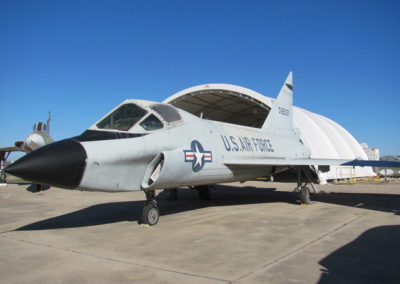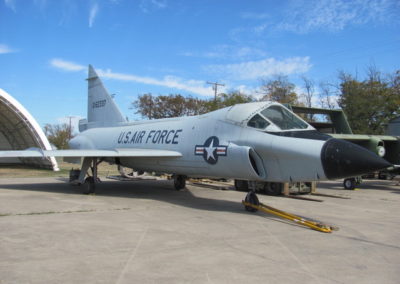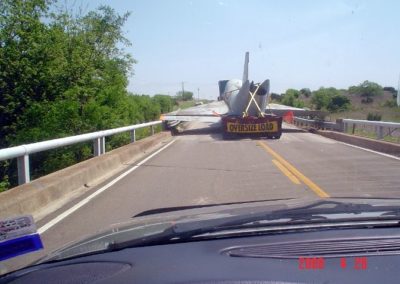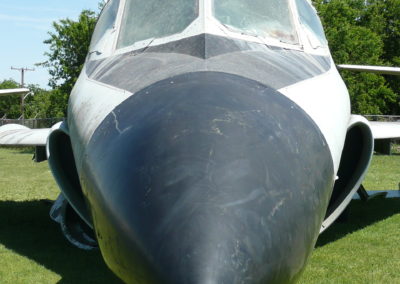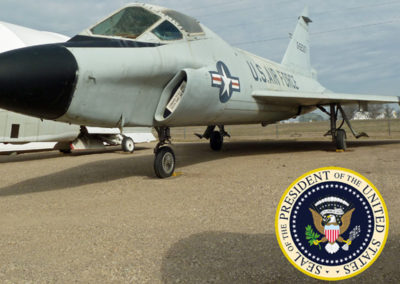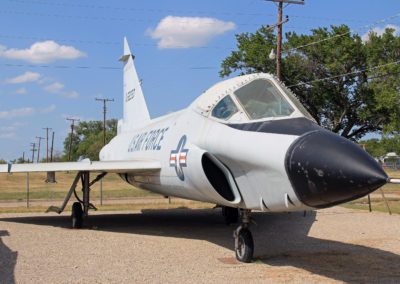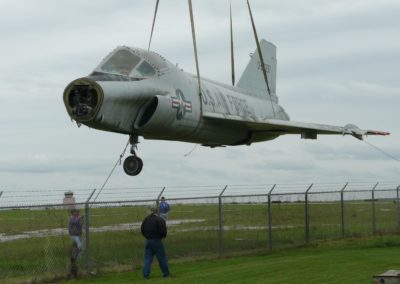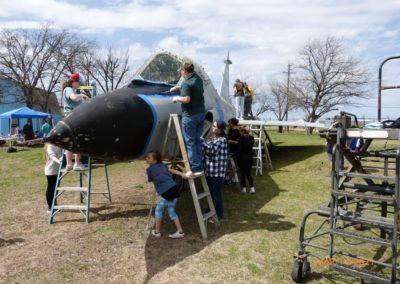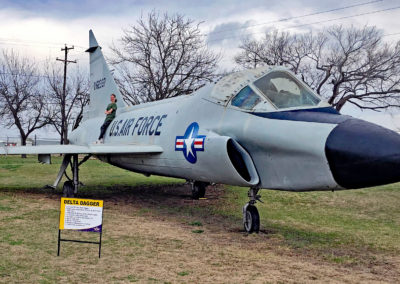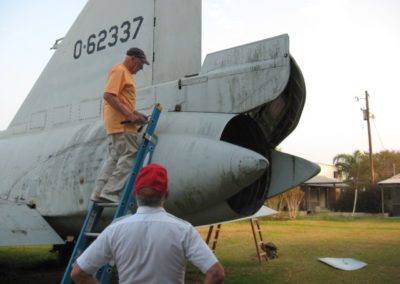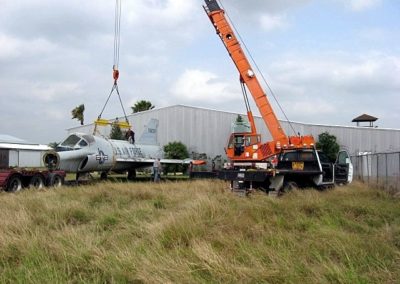TF-102 Delta Dagger
President George W. Bush flew this plane three times during his service in the Texas Air National Guard.
Warbird Overview
The primary mission of the F-102 was to intercept and destroy enemy aircraft. It was the world’s first supersonic all-weather jet interceptor and the USAF’s first operational delta-wing aircraft. The F-102 made its initial flight on Oct. 24, 1953, and became operational with the Air Defense Command in 1956. At the peak of deployment in the late 1950s, F-102s equipped more than 25 ADC squadrons. Convair built 1,000 F-102s, 875 of which were F-102As.
ABOUT THE TF-102 DELTA DAGGER
President George W. Bush flew this plane three times during his service in the Texas Air National Guard.
The primary mission of the F-102 was to intercept and destroy enemy aircraft. It was the world’s first supersonic all-weather jet interceptor and the USAF’s first operational delta-wing aircraft. The F-102 made its initial flight on Oct. 24, 1953, and became operational with the Air Defense Command in 1956. At the peak of deployment in the late 1950s, F-102s equipped more than 25 ADC squadrons. Convair built 1,000 F-102s, 875 of which were F-102As. The USAF also bought 111 TF-102s like this one as combat trainers with side-by-side seating. In a wartime situation, after electronic equipment on board the F-102 located enemy aircraft, the F-102’s radar would guide it into position for attack. At the proper moment, the electronic fire control system would automatically fire the F-102’s air-to-air rockets and missiles.
The TF-102A is a two-place, side-by-side trainer version of the F-102A and is designed for combat use if needed. The airplane is equipped with a radar fire control system and is powered by a J57-P-23 axial-flow turbojet engine with an afterburner. The airplane is characterized by a large 60-degree delta wing and the absence of a conventional empennage. Later aircraft (serial number 56-2336 and up) are equipped with a modified wing (Case XX wing) which produces greater lift and increases performance. The Case XX wing may be distinguished from the wing on earlier airplanes (Case X wing) by the droop at the wing-tip. The delta wing is equipped with elevons that provide a combination of aileron and elevator action from conventional cockpit controls. All control surfaces are hydraulically actuated and incorporate an artificial feel system. The TF-102 is equipped with a pressurized cockpit and contains two ejection seats. The aft fuselage-mounted speed brakes also serve as compartment doors for a drag chute. The six integral wing fuel tanks are serviced by a single-point pressure refueling system and fuel usage is sequenced automatically to maintain desirable center of gravity.
Fact #1
The TF-102 was the trainer version of the Convair F-102 Delta Dagger – an interceptor aircraft designed to repel Soviet bombers. They also served as trainers for B-58 supersonic bombers.
Fact #2
The nose section of this TF-102 was built in Fort Worth by Convair and then shipped to California for mating with the fuselage and wings.
Fact #3
President George W. Bush flew this aircraft three times at Ellington Air Force Base in Houston.
Manufacturer: Convair
Weight: 28,978 pounds to 32,104 pounds based on loading
Armament: 24 unguided 2.75-inch rockets and six guided missiles
Engine: One Pratt & Whitney J57-P-23A of 10,200 lbs. thrust at military power and 16,000 lbs. thrust with afterburner
Maximum Speed: 646 mph
Cruising Speed: 452 knots (.79 Mach)
Range: 1,350 nautical miles
Service Ceiling: 55,000 feet
Span: 38 feet, 1.6 inches
Length: 63 feet, 4.3 inches
Height: 21 feet, 2.25 inches
Tread: 14 feet, 2.25 inches
Crew: Two
The Fort Worth Aviation Museum’s TF-102 (serial number 56-2337) was constructed by Convair in San Diego, California. The cockpit portion was actually constructed in Fort Worth and shipped to San Diego. The aircraft was delivered January 2, 1958, and assigned to the Air Defense Command, 327th Fighter Interceptor Squadron at George AFB, California, although the unit was deployed to Tyndall AFB in Florida at the time. In July 1958, the unit moved to Thule AB in Greenland. In March 1960, the aircraft was assigned to the 382nd Fighter-Interceptor Squadron at Seymour Johnson AFB, North Carolina, then deployed to Myrtle Beach AFB, in South Carolina. In September 1960, the aircraft went to the Air Training Command’s 3555th Flying Training Wing, Perrin AFB in Sherman, Texas. In July 1962, the aircraft was returned to the Air Defense Command and assigned to the 4780th Air Defense Wing at Perrin AFB who was deployed to Tyndall AFB in Florida at the time. In November 1969, the aircraft was assigned to the Air National Guard’s 147th Fighter Group at Ellington Field, Houston, Texas. It was while in Houston, that President George W. Bush flew this aircraft on three occasions. In February 1971, the aircraft was retired and transferred to museum duty.
REFERENCES
http://www.nationalmuseum.af.mil/factsheets/factsheet.asp?id=2309
http://USAF Technical Order 1F-102A-1
http://www.nationalmuseum.af.mil/factsheets/factsheet.asp?id=2327
George W. Bush has now got a sponsor. B-36 Group buying new tires, paint, new glass windshield left side front, funding for “tail feathers” or – afterburner AB if funds permit. And a group of volunteers to refurbish is in the works for this year.
Note: Scheduling is always a moving target depending on weather and workload. All schedules are subject to changes.
Become a Member!
